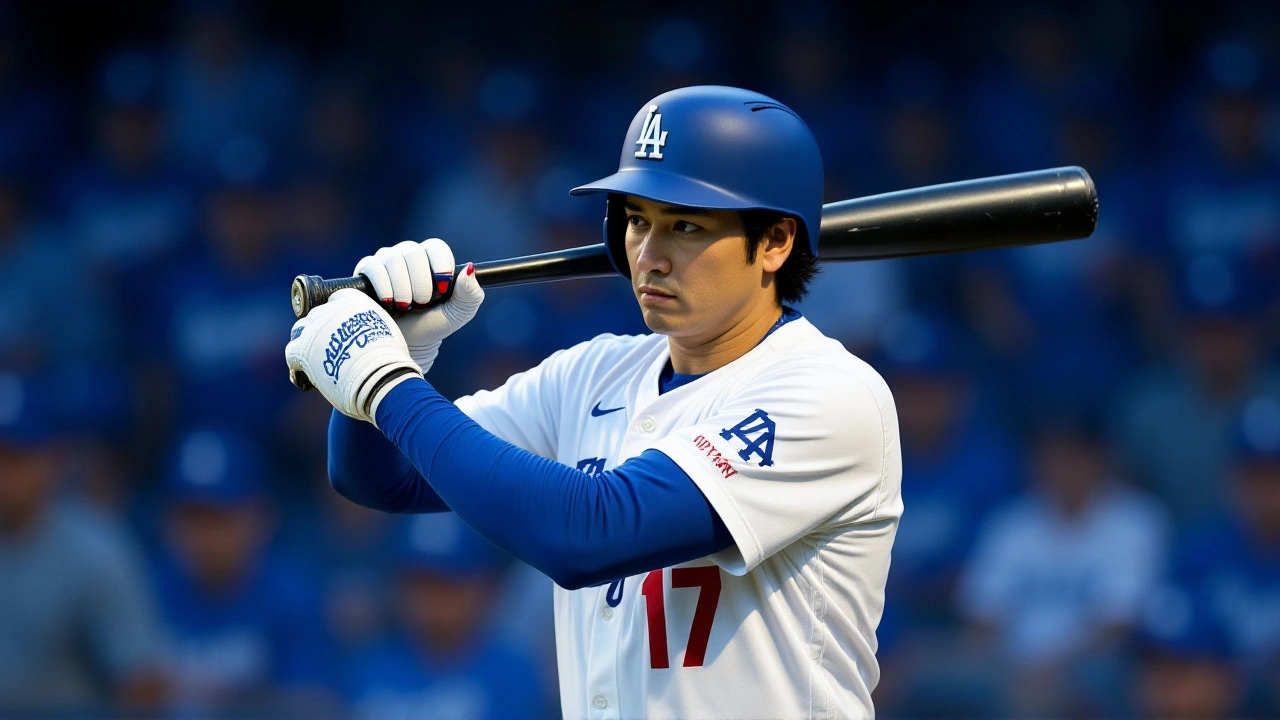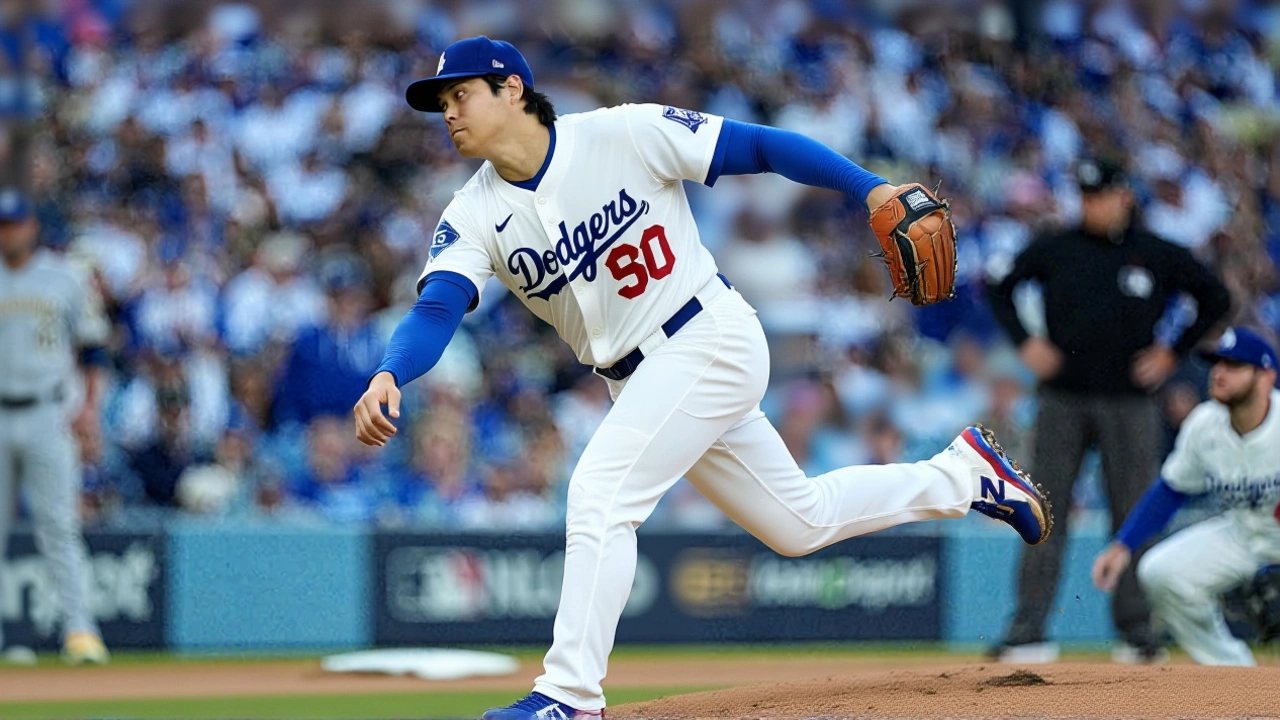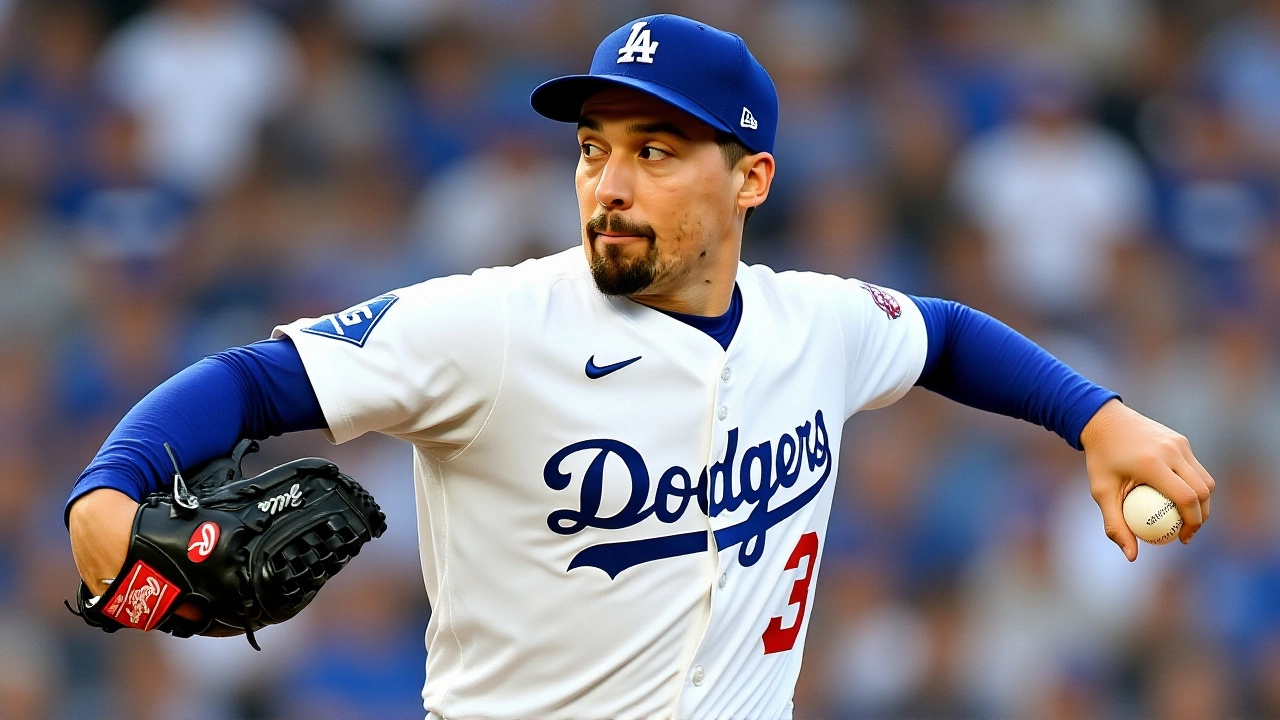Shohei Ohtani’s historic NLCS Game 4: Pitcher fires leadoff homer and 10 K’s
 Oct, 18 2025
Oct, 18 2025
When Shohei Ohtani, a 31‑year‑old Japanese pitcher and designated hitter, stepped onto the mound for the Los Angeles Dodgers in Game 4 of the National League Championship SeriesDodger Stadium on Oct 17 2025, the stakes were crystal clear: clinch the pennant or watch the season slip away. The result? A performance that rewrote the two‑way playbook, as Ohtani became the first pitcher in MLB history to launch a leadoff home run and finish with a double‑digit strikeout night, propelling the Dodgers to a 5‑1 sweep of the Milwaukee Brewers and a berth in the World Series.
Background: Ohtani’s two‑way evolution
Since bursting onto the scene with the Los Angeles Angels in 2018, Ohtani has been a novelty turned necessity. His 10‑year, $700 million contract signed in Dec 2023 marked the biggest deal in any sport, underscoring how seriously teams now view a player who can dominate both mound and plate. In 2024 he already logged a leadoff homer in the NLCS against the New York Mets, but nothing hinted at the three‑home‑run, 10‑strikeout spectacle he would pull off a year later.
Game 4 breakdown: Pitching dominance meets power hitting
After walking Brewers shortstop Brice Turang on a 1‑2‑3 count, Ohtani rattled off three consecutive strikeouts—center fielder Jackson Chourio, right fielder Christian Yelich and DH Rhys Hoskins—using a mix of 101‑mph fastballs and his signature splitter. That 19‑pitch first inning set the tone.
In the bottom half, Ohtani turned the tables, crushing a 446‑foot solo shot off left‑hander Jose Quintana. The blast, measured by Statcast at 446 feet, was the first leadoff homer ever recorded by a pitcher in either regular season or postseason play.
He stayed the course, fanning one batter in the third, two in the fourth, and adding a second monster home run—this one a 469‑foot mammoth that seemed to echo through the stadium. Relief pitcher Alex Vesia, breathing down the Dodgers’ bench, later joked, “The ball went out of the stadium!” while the tally on the scoreboard read 5‑0.
The sixth inning capped the masterpiece: Ohtani launched his third homer of the night, a 423‑foot drive that cemented his place as the first player in postseason history to combine three home runs with ten or more strikeouts. He finished with ten K’s, one walk, and three hits across six-plus scoreless innings.
Reactions from the dugout and the broadcast booth
Third‑baseman Max Muncy could barely contain himself: “You guys asked me yesterday, and I said I was expecting nothing short of incredible today. He proved me wrong. He went beyond incredible.” ESPN’s Jeff Passan called the night “a freakin’ fireworks show for a single player.”
On the TBS broadcast, Hall of Famer Pedro Martínez mused, “We’ve never seen a two‑way player dominate a postseason game the way Ohtani just did. It’s a new frontier.” Former outfielder Curtis Granderson added that Ohtani’s feat “makes you rethink what’s possible for a pitcher‑hitter combo.”

Historical significance: More than just a box score
Ohtani’s night joins the rarefied company of Babe Ruth, the only other player to excel both on the mound and at the plate, but even Ruth never hit three homers while striking out ten in a single postseason game. The feat also ties Ohtani with five other players for the most leadoff homers in a single postseason (three), and it sets a new benchmark for two‑way athletes.
Statistically, the night produced a slugging percentage of .889 for Ohtani, a strikeout‑to‑walk ratio of 10:1, and a Wins‑Above‑Replacement (WAR) of 2.3 in a single game—figures that typically belong to a complete season, not a single 6‑plus‑inning outing.
Impact on the upcoming World Series
The Dodgers now face the American League champion in a best‑of‑seven showdown that kicks off on Oct 21 2025 at Globe Life Field in Arlington, Texas. Ohtani’s dual threat forces the opposing pitching staff to reconsider their lineups; any manager will now have to factor in the possibility of a pitcher who can also swing the bat for three solid homers.
Analysts predict the Dodgers will lean on Ohtani as both ace and power hitter, especially if the series heads into Game 5 or beyond. “You could have a scenario where Ohtani starts, bats, and then is relieved by a reliever who can pitch the rest of the night,” speculated baseball‑sabermetrics guru Adam Lefkoe. That flexibility could be the X‑factor against a deep AL rotation.

Future outlook for two‑way players
Ohtani’s showcase reignites the debate on whether more clubs will cultivate two‑way talent. The Seattle Mariners recently drafted a high‑school pitcher with notable hitting power, and the New York Yankees have hinted at a trial for a swing‑and‑throw prospect. If Ohtani continues to thrive, the market could see a surge in contracts mirroring his $700 million deal.
For now, the baseball world watches as Ohtani prepares for the biggest stage of his career. Whether his historic Game 4 performance is a fluke or the dawn of a new era, one thing’s clear: the pitcher‑hitter hybrid has arrived, and it’s rewriting the rulebook.
Frequently Asked Questions
How does Ohtani’s performance affect the Dodgers’ World Series strategy?
The Dodgers can now plan to start Ohtani in the rotation while still banking on his power bat. If the series extends, manager Dave Roberts may use a "double‑duty" approach, preserving bullpen arms and keeping the lineup potent. Opponents will need a deeper bench to counter both his mound and plate contributions.
What records did Ohtani break in Game 4?
He became the first pitcher ever to hit a leadoff home run and record ten or more strikeouts in the same postseason game, and also the first player to tally three homers with ten‑plus K’s in any playoff contest. Additionally, his 10‑strikeout, one‑walk line set a new NLCS benchmark for pitcher efficiency.
Who were the key contributors besides Ohtani in the sweep?
Blake Snell, Yoshinobu Yamamoto and Tyler Glasnow each logged 7+ strikeouts while pitching five‑plus innings. Off the field, Alex Vesia provided clutch relief, and Max Muncy’s solid defense helped shut down Milwaukee’s late‑inning rallies.
Could Ohtani’s contract inspire other teams to pursue two‑way players?
Absolutely. The $700 million deal set a new ceiling for player value, and clubs now see measurable upside in developing talent that can fill two roster spots. Scouts report a rise in dual‑skill prospects, and the market is likely to see more multi‑year, high‑value contracts for two‑way players.
What does this game mean for the Brewers’ future plans?
The sweep exposes gaps in Milwaukee’s bullpen depth and their ability to contend with elite two‑way talent. Front office officials are expected to explore trades for high‑velocity arms and consider enhancing their offensive lineup to mitigate future threats from players like Ohtani.